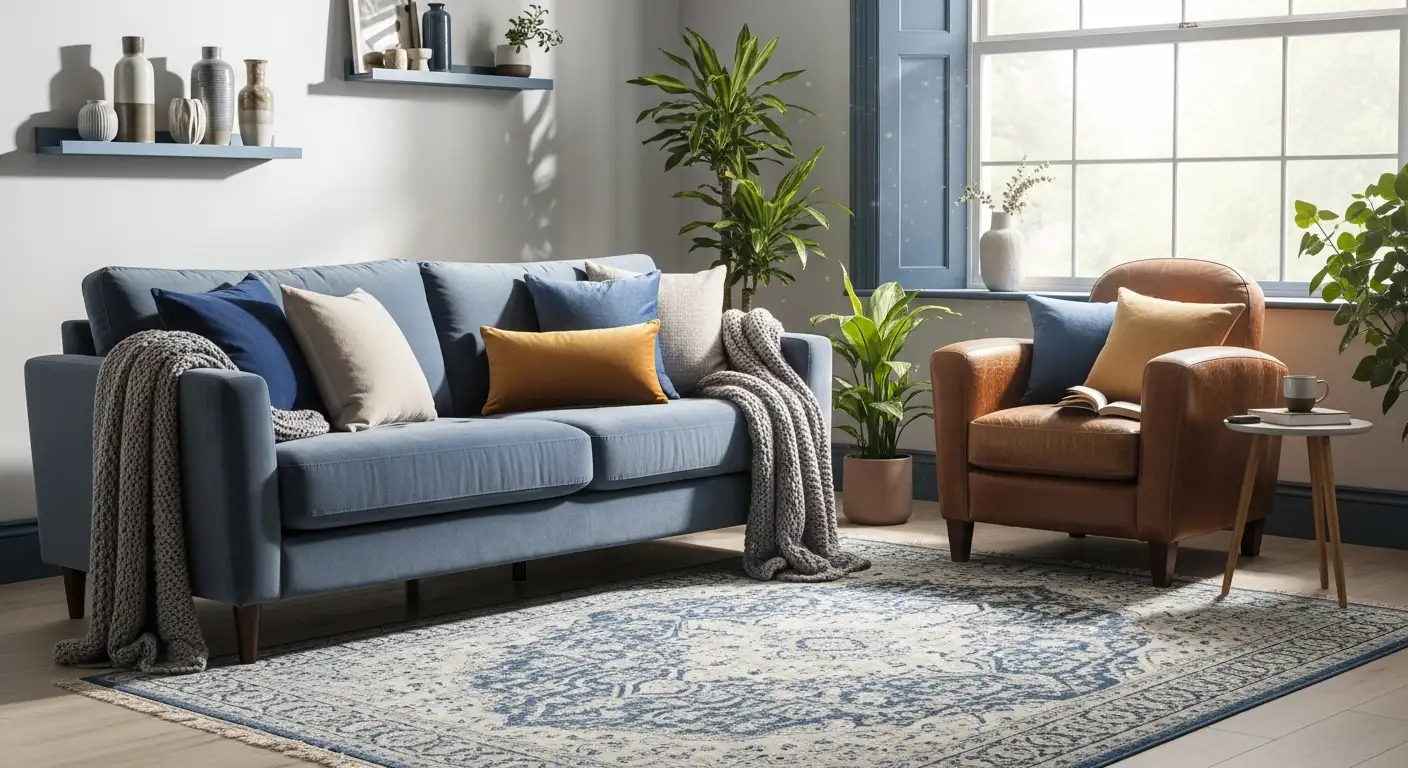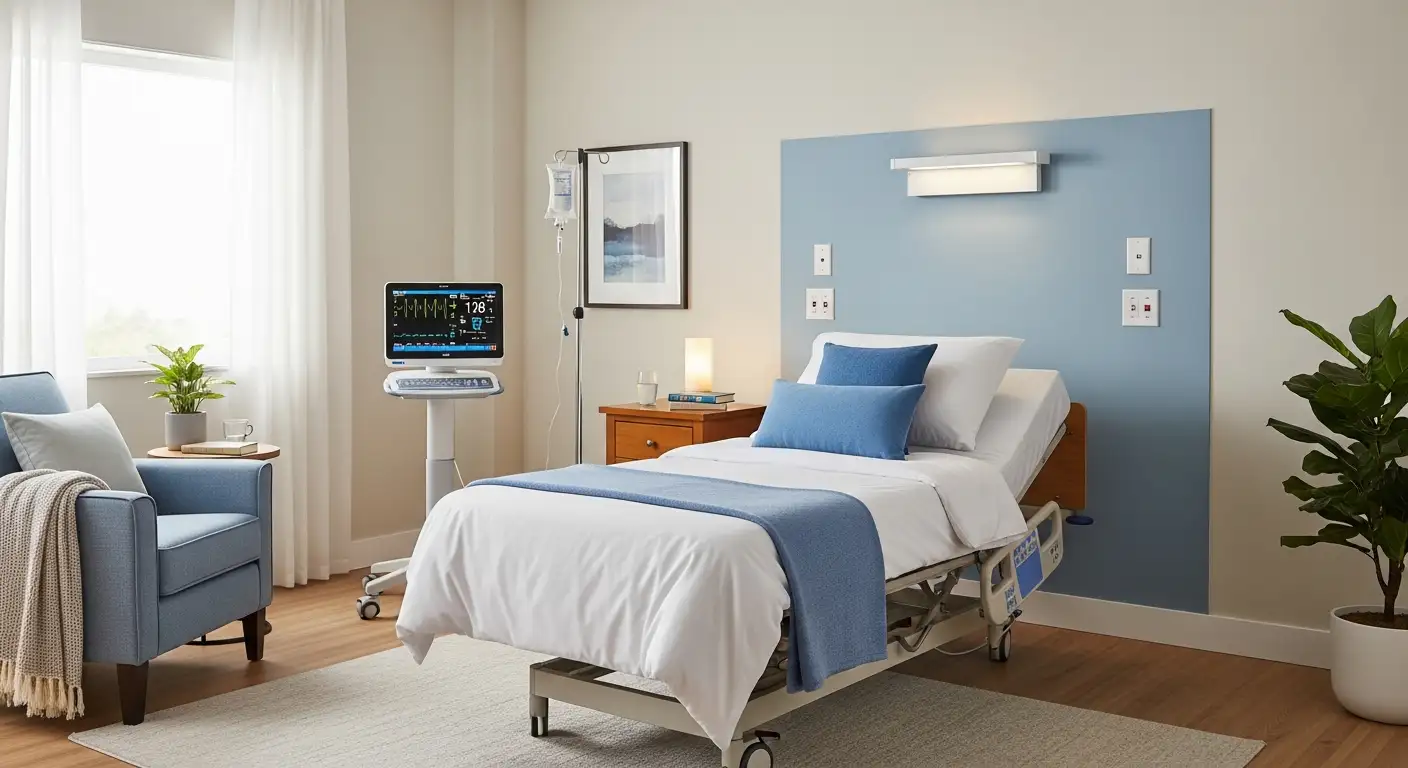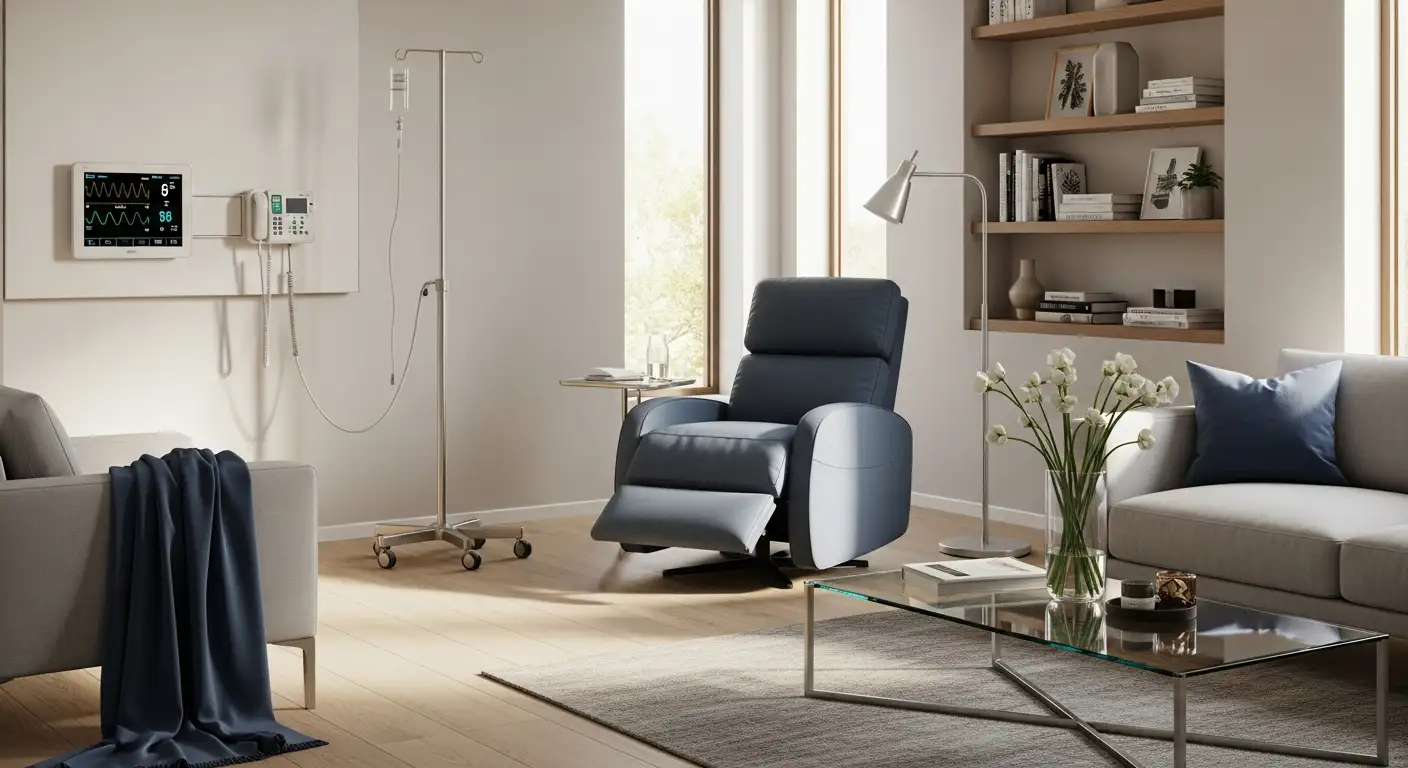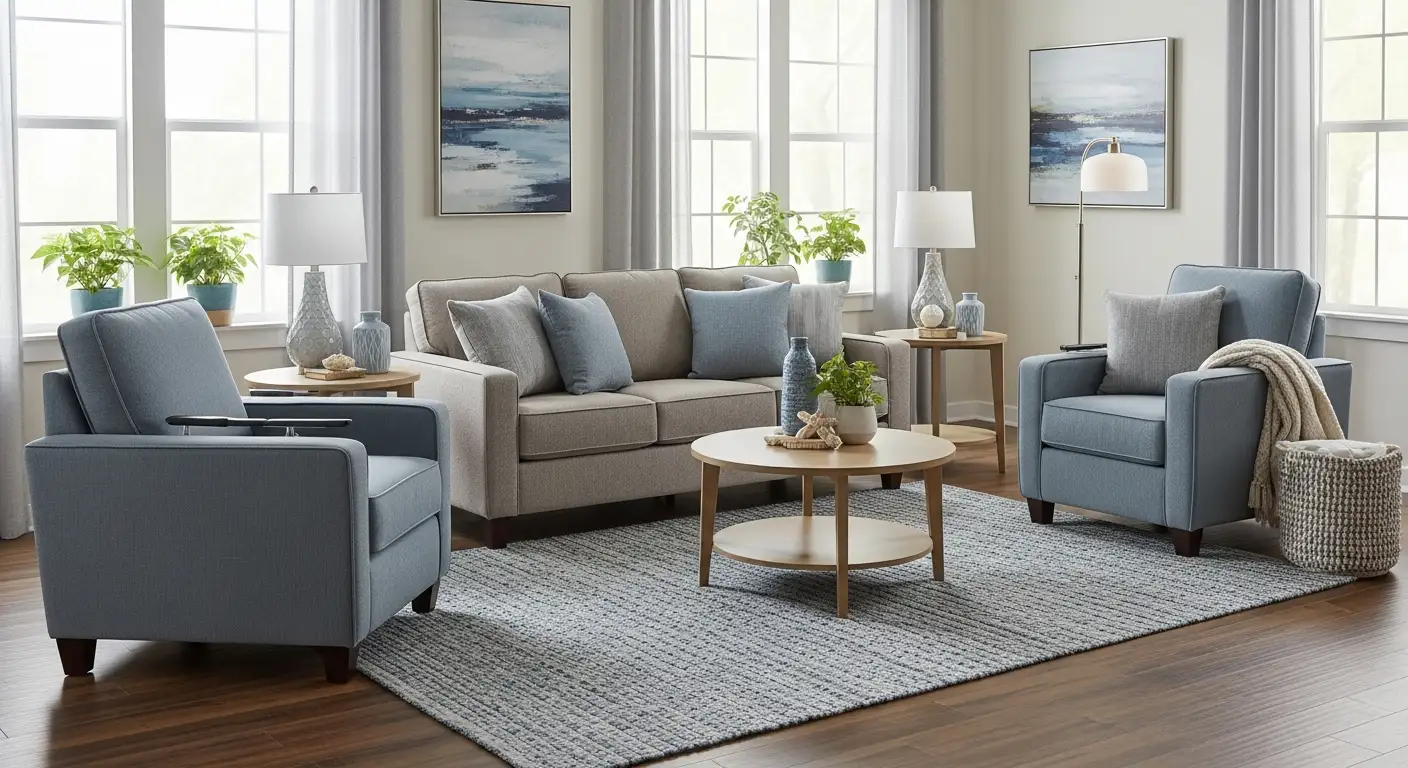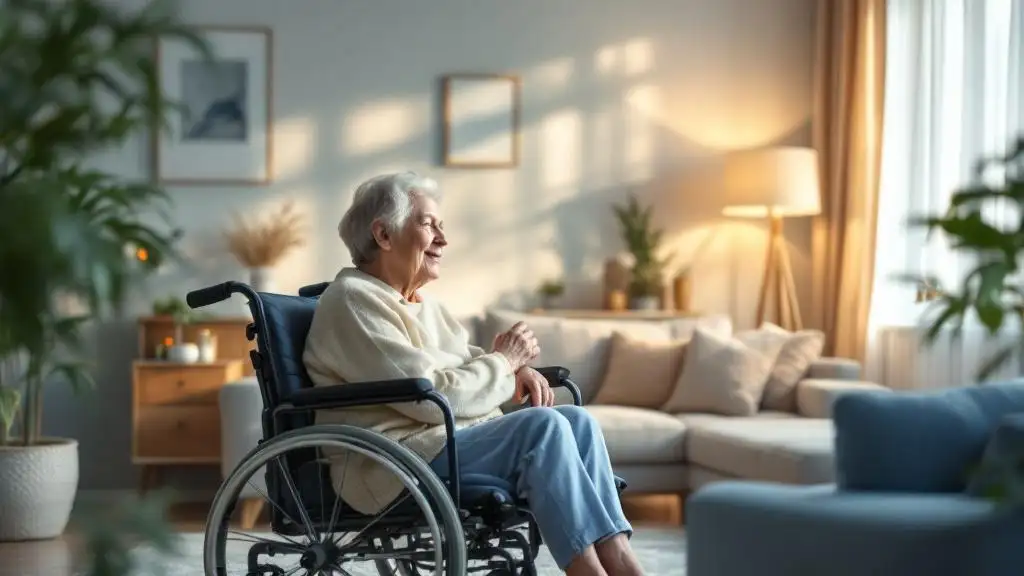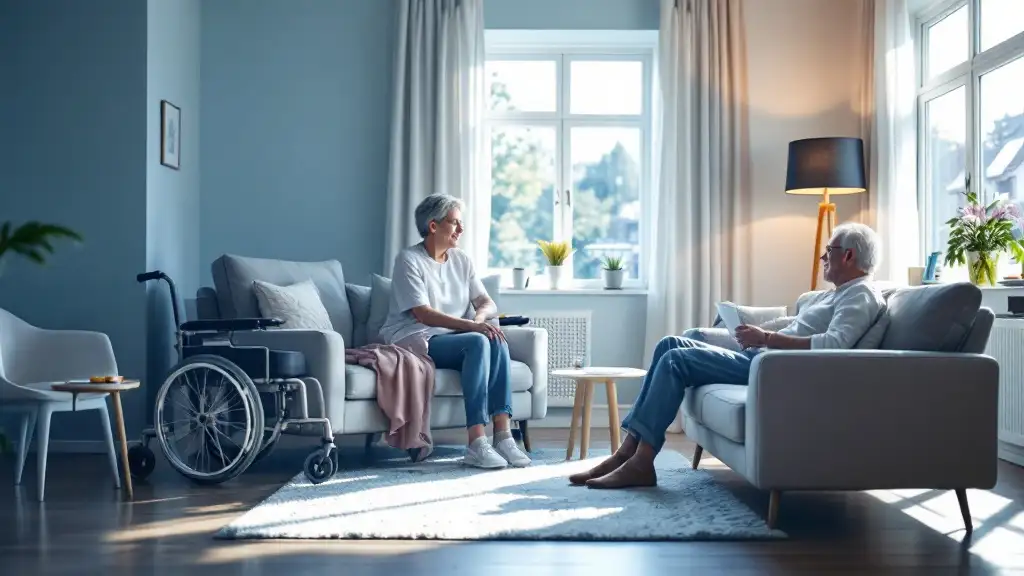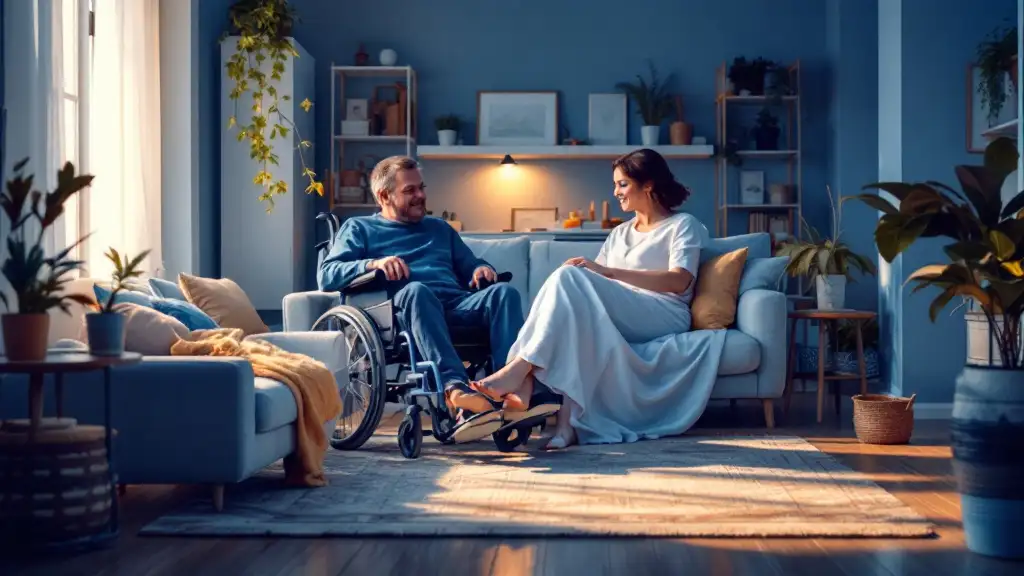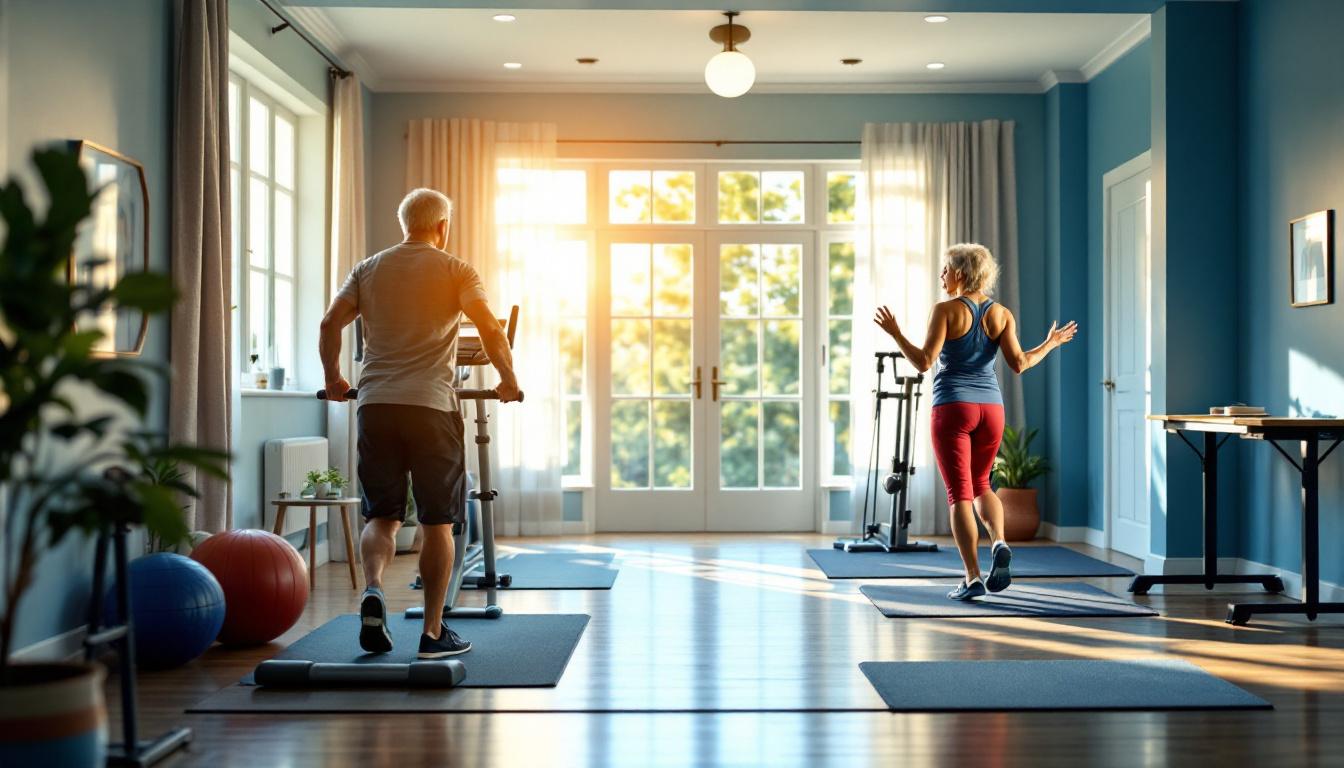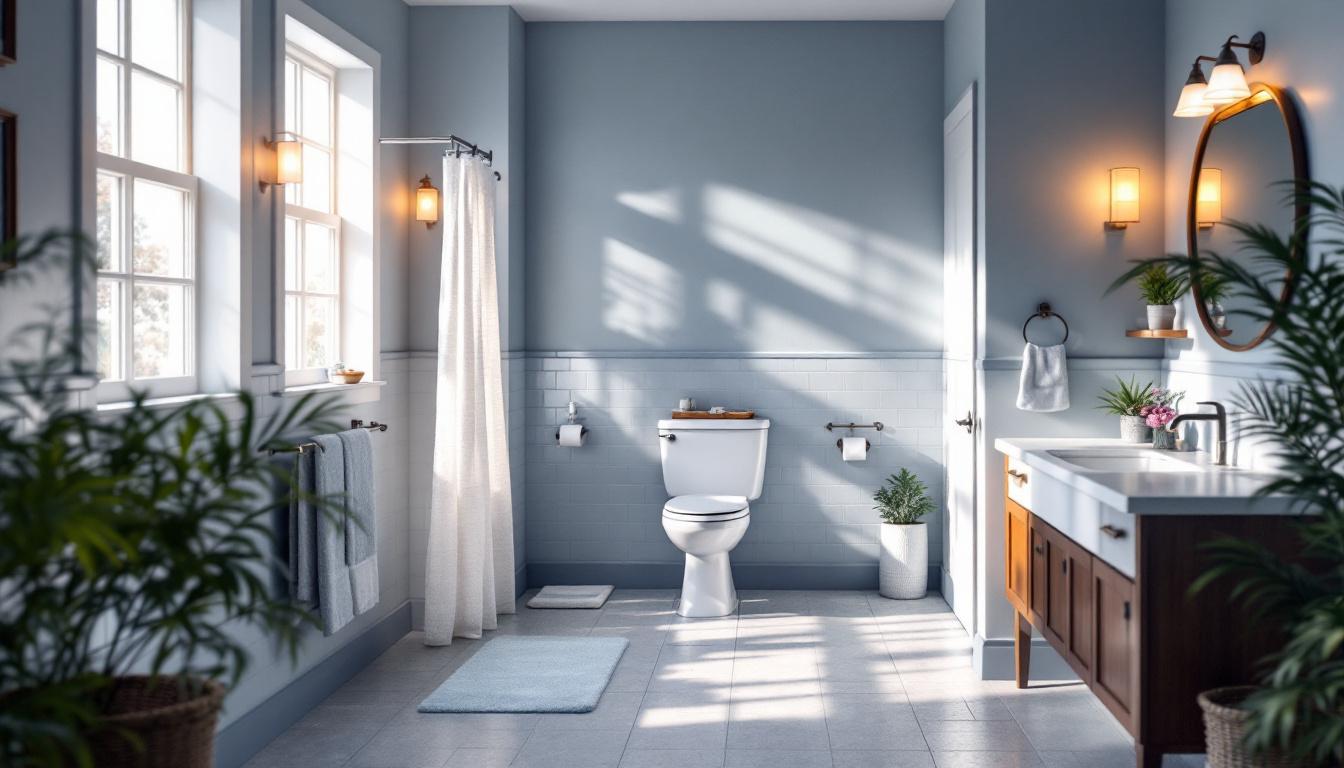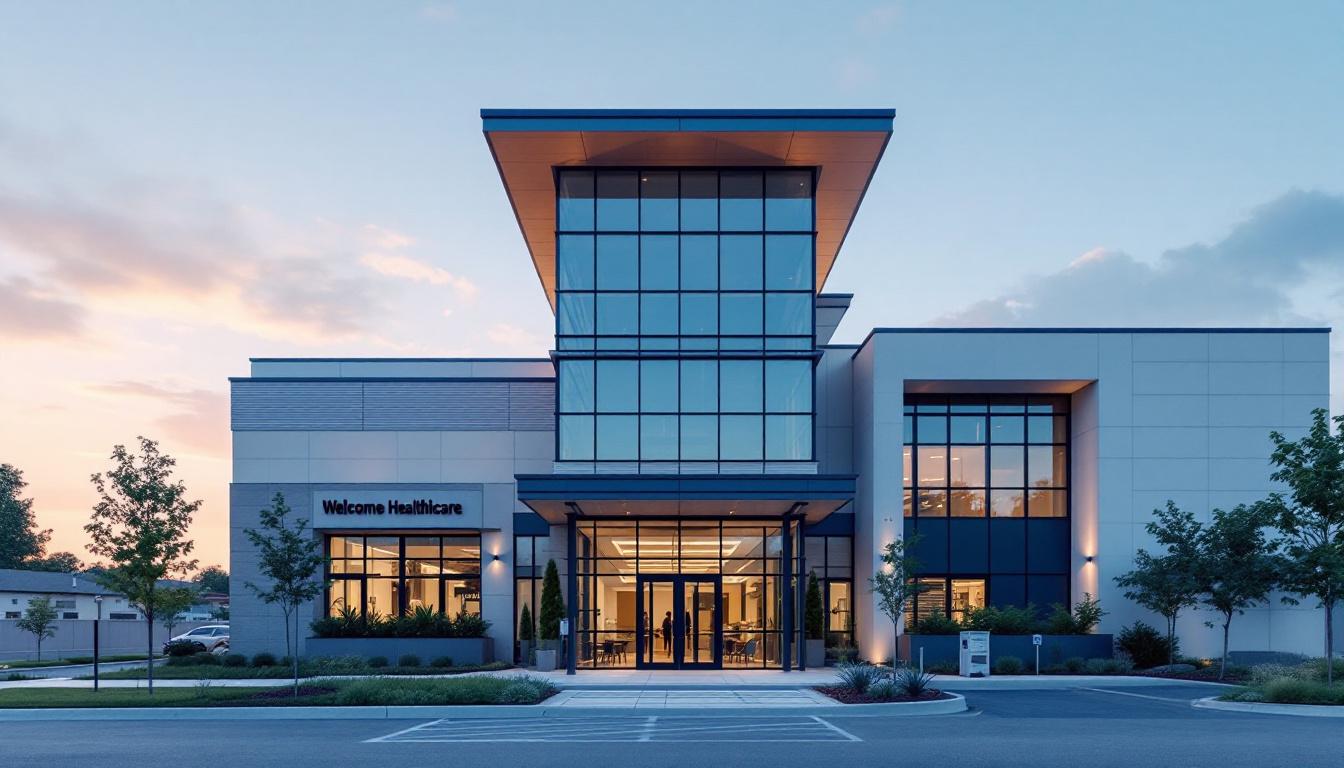Stay Active and Strong: Top Hip Flexor Exercises for the Elderly
Stay active and strong with hip flexor exercises for the elderly. Boost mobility and vitality with these effective routines.

Hip Flexor Exercises for Seniors
Taking care of hip flexor health is essential for seniors to maintain mobility and overall well-being. By incorporating specific exercises that target the hip flexor muscles, seniors can experience improved flexibility, reduced muscle tightness, and enhanced mobility. Let's explore the importance of hip flexor exercises for seniors and the benefits they provide.

Importance of Hip Flexor Exercises
Hip flexor exercises play a crucial role in maintaining mobility and flexibility in the hips, which are essential for performing everyday movements like walking, standing, and climbing stairs (Alberta Health Services). As individuals age, there is a natural decline in flexibility, particularly in the posterior kinetic chains of the body, which can increase the risk of falling (Source).
By targeting the hip flexor muscles through exercises, seniors can counteract this decline in flexibility and improve their overall quality of life. Regularly engaging in hip flexor exercises helps to maintain joint range of motion, enhance postural balance, and reduce the risk of falls (Source). These exercises specifically target the muscles that allow for movement at the hip joint, promoting better functional movement and minimizing discomfort or limitations.
Benefits of Hip Flexor Exercises for Seniors
Incorporating hip flexor exercises into a senior's exercise routine offers numerous benefits. Some of the key advantages include:
- Improved Flexibility: Hip flexor exercises aim to stretch and strengthen the muscles, leading to increased flexibility in the hips. This improved flexibility allows for a wider range of motion, making daily activities easier and more comfortable.
- Reduced Muscle Tightness: Seniors often experience muscle tightness, especially in the hip flexor area. Regular hip flexor exercises can help alleviate this tightness, promoting relaxation and reducing discomfort.
- Enhanced Overall Mobility: By targeting the hip flexor muscles, seniors can enhance their overall mobility. This includes improved walking ability, increased ease in standing up from a seated position, and better performance of daily tasks that require hip flexibility.
- Fall Prevention and Balance Enhancement: Regularly stretching and strengthening the hip flexor muscles can contribute to fall prevention and balance maintenance in elderly individuals (Freedom Care). Strong hip flexors provide greater stability and support during movements, reducing the risk of falls and associated injuries.
It is important for seniors to consult with a healthcare professional before starting any new exercise regimen, including hip flexor exercises. Additionally, gradual progression and proper form should be prioritized to ensure safety and maximize the benefits of these exercises.
By incorporating hip flexor exercises into their fitness routine, seniors can maintain their hip health, improve flexibility, and reduce the risk of falls. These exercises contribute to overall well-being and enhance mobility, allowing seniors to stay active and strong as they age.
Standing Hip Flexor Exercises
To improve hip flexor flexibility and strength in seniors, standing hip flexor exercises can be highly beneficial. These exercises target the hip flexor muscles, which play a vital role in everyday movements like walking, standing, and climbing stairs. Here are two effective standing hip flexor exercises that can be incorporated into a senior's exercise routine:
Standing Hip Flexor Stretch
The standing hip flexor stretch helps elongate the hip flexor muscles, improving their flexibility and reducing tightness. Follow these steps to perform the exercise:
- Stand with your feet hip-width apart.
- Take a step forward with your right foot, keeping your back straight.
- Bend your right knee and lower your left knee towards the floor, ensuring both knees are at a 90-degree angle.
- Engage your core and gently push your hips forward, feeling a stretch in the front of your left hip.
- Hold the stretch for 20-30 seconds, breathing deeply.
- Repeat the stretch on the other side by stepping forward with your left foot.
Chair-Assisted Standing Hip Flexor Stretch
The chair-assisted standing hip flexor stretch provides stability and support for seniors while still targeting the hip flexor muscles. Here's how to perform this exercise:
- Stand facing a sturdy chair or countertop, placing your hands lightly on the surface for support.
- Take a step back with your right foot, keeping your back straight.
- Bend your left knee slightly, engaging your core for stability.
- Gently push your hips forward, feeling a stretch in the front of your right hip.
- Hold the stretch for 20-30 seconds, maintaining a steady breathing rhythm.
- Repeat the stretch on the other side by stepping back with your left foot.
These standing hip flexor exercises can help improve flexibility, reduce muscle tightness, and enhance overall mobility in seniors. It is important to perform these exercises consistently and gradually progress, focusing on maintaining proper form and technique to avoid injury. Before starting any new exercise routine, including hip flexor exercises, it is advisable for elderly individuals to consult with a healthcare professional or physical therapist (Freedom Care).
Seated Hip Flexor Exercises
For seniors looking to strengthen and stretch their hip flexor muscles, seated exercises can be a safe and effective option. These exercises can be performed while seated on a chair or any stable surface, making them accessible for individuals with limited mobility. Here are two beneficial seated hip flexor exercises for seniors:
Seated Leg Lifts
Seated leg lifts are a simple yet effective exercise for targeting the hip flexor muscles. To perform this exercise:
- Sit upright on a chair with your feet flat on the floor, hip-width apart.
- Place your hands on the sides of the chair for support.
- Keeping your back straight and core engaged, lift one leg off the floor, straightening it in front of you.
- Hold the lifted position for a few seconds, feeling a gentle stretch in your hip flexor.
- Lower your leg back down to the starting position.
- Repeat the exercise with the opposite leg.
- Aim to perform 8-10 repetitions for each leg.
Seated leg lifts help to improve hip flexibility and strengthen the hip flexor muscles. Remember to maintain proper posture throughout the exercise and avoid any jerking or sudden movements.
Chair-Assisted Hip Flexor Stretch
The chair-assisted hip flexor stretch is a modified version of the standing hip flexor stretch, providing stability and support for seniors while still targeting the hip flexors. Here's how to perform this stretch:
- Sit on the edge of a chair with your feet flat on the floor.
- Take a step back with one foot, placing the ball of your foot on the floor.
- Keep your back straight and engage your core.
- Slowly shift your weight forward, bending your front knee slightly.
- You should feel a stretch in the hip flexor of the leg that is extended behind you.
- Hold the stretch for 20-30 seconds, breathing deeply.
- Return to the starting position and repeat the stretch with the opposite leg.
The chair-assisted hip flexor stretch helps to alleviate muscle tightness and improve flexibility in the hip area. Remember to perform the stretch in a controlled manner and avoid any bouncing or excessive stretching.
By incorporating these seated hip flexor exercises into a regular exercise routine, seniors can improve mobility, flexibility, and overall hip health. It's always important to consult with a healthcare professional before starting any new exercise program, especially if you have any pre-existing conditions or concerns.
Supine Hip Flexor Exercises
For seniors looking to strengthen and maintain flexibility in their hip flexor muscles, incorporating supine hip flexor exercises into their routine can be highly beneficial. These exercises are performed while lying on the back, making them accessible and suitable for individuals of varying fitness levels.
Supine Hip Flexor Stretch
The supine hip flexor stretch is an effective exercise that targets the hip flexor group, which plays a vital role in everyday movements like walking, standing, and climbing stairs. To perform this stretch:
- Lie flat on your back on a comfortable surface, such as a yoga mat or carpet.
- Bend one knee and keep the foot flat on the ground, while the other leg remains straight.
- Slowly raise the straight leg towards your chest, keeping the knee slightly bent if needed, until you feel a gentle stretch in the front of your hip.
- Hold the stretch for 15-30 seconds, focusing on relaxing the muscles involved.
- Return your leg to the starting position and repeat with the other leg.
Performing the supine hip flexor stretch on both sides can help improve flexibility in the hip flexor muscles and reduce muscle tightness. Remember to breathe deeply and avoid any pain or discomfort during the stretch.
Butterfly Pose
The butterfly pose, also known as the bound angle pose, is another effective supine exercise that targets the hip flexors (One Medical). This pose helps to improve the flexibility and mobility of the hip joints. Here's how to do it:
- Start by sitting on the floor or a mat with your back straight and legs extended in front of you.
- Bend your knees and bring the soles of your feet together, allowing your knees to gently drop out to the sides.
- Slowly lie back, keeping your spine straight and shoulders relaxed.
- If comfortable, gently press your hands against your inner thighs to deepen the stretch.
- Hold the pose for 30 seconds to one minute, focusing on deep breathing and relaxing into the stretch.
The butterfly pose is a gentle exercise that can help improve hip flexibility and reduce muscle tightness in the hip flexors. It is important to listen to your body and not push beyond your comfort level.
Incorporating these supine hip flexor exercises into a regular exercise routine can help seniors improve flexibility, reduce muscle tightness, and enhance overall mobility. Remember to consult with a healthcare professional before starting any new exercise program, especially if you have pre-existing conditions or concerns.
Precautions and Considerations for Seniors
When engaging in hip flexor exercises, it is crucial for seniors to take certain precautions and considerations to ensure safety and maximize the benefits of the exercises.
Consulting with a Healthcare Professional
Before starting any new exercise routine, including hip flexor exercises, it is important for elderly individuals to consult with a healthcare professional or physical therapist. They can assess the individual's overall health and provide guidance on the most appropriate exercises based on their specific needs and limitations (Freedom Care). This step is particularly important for individuals with existing medical conditions or musculoskeletal issues.
A healthcare professional can offer valuable advice on modifications, intensity levels, and any necessary precautions to take into account while performing hip flexor exercises. They can also address any concerns and ensure that the exercises are safe and suitable for the individual's current physical condition.
Gradual Progression and Proper Form
Consistency and gradual progression are key when performing hip flexor exercises, especially for seniors. It is important to start with exercises that are appropriate for the individual's current level of flexibility and strength. As they become more comfortable and gain confidence, they can gradually increase the intensity and duration of the exercises.
Proper form and technique are essential to avoid injury and maximize the effectiveness of the exercises. Seniors should pay close attention to their body alignment and perform the exercises with controlled movements. It may be beneficial to work with a physical therapist or experienced fitness professional to ensure proper form and technique.
Maintaining proper breathing techniques throughout the exercises is also important. Breathing deeply and exhaling during the most challenging part of the exercise can help relax the muscles and enhance the overall experience.
By taking these precautions and considerations, seniors can safely engage in hip flexor exercises. It is important to listen to their bodies, respect their limitations, and make any necessary adjustments to ensure a safe and effective workout.
The Role of Hip Flexor Exercises in Senior Health
Hip flexor exercises play a crucial role in maintaining the health and well-being of seniors. These exercises specifically target the muscles in the hip flexor region, offering numerous benefits that contribute to overall mobility, flexibility, and balance. Let's explore two key advantages of incorporating hip flexor exercises into the fitness routine of older adults.
Improved Mobility and Flexibility
Regularly engaging in hip flexor exercises can significantly improve mobility and flexibility for seniors. As individuals age, the lack of flexibility can become a cause and consequence of postural imbalance, movement limitations, and alterations in gait parameters, making daily activities more challenging and reducing their quality of life.
By focusing on stretching and strengthening the hip flexor muscles, seniors can enhance their joint range of motion and postural balance. The exercises target the posterior kinetic chains of the body, which are especially prone to decreased flexibility with age. This improved flexibility not only makes daily activities easier but also enhances overall movement and functionality.
Fall Prevention and Balance Enhancement
One of the critical concerns for seniors is fall prevention. Falls can lead to severe injuries and have a significant impact on their independence and quality of life. Including hip flexor exercises in their fitness routine can help mitigate the risk of falls and maintain balance.
Stretching and strengthening the hip flexor muscles contribute to the stability and strength of the lower body. This, in turn, improves the overall balance and reduces the likelihood of falls. By targeting these muscles, seniors can enhance their proprioception and control over their movements, reducing the risk of accidents.
To fully reap the benefits of improved balance, it is crucial for seniors to consult with a healthcare professional or a qualified fitness trainer before starting any exercise regimen. They can provide guidance on the most suitable exercises and ensure they are performed with proper form and technique.
Incorporating hip flexor exercises into the fitness routine of seniors can have a significant positive impact on their overall health and well-being. By focusing on improved mobility, flexibility, and balance, these exercises empower older adults to maintain an active and independent lifestyle.
Strengthening the Hips for Seniors
As individuals age, maintaining strength and mobility becomes increasingly important for overall health and independence. One area that deserves special attention is the hips. Strong hip muscles are crucial for stability, balance, and performing daily activities. In this section, we will explore the importance of hip strength for seniors and provide some hip strengthening exercises specifically designed for older adults.
Importance of Hip Strength for Seniors
Weak hip muscles can make it difficult to stand, squat, bend, walk, and climb stairs, increasing the risk of falling and hip fractures (Banner Health). As individuals age, muscle mass naturally declines, but regular exercise can slow down this decrease and help maintain muscle strength.
Strengthening the hips through targeted exercises can provide numerous benefits for seniors. Strong hip muscles support activities of daily living, such as picking up objects or lifting grandchildren, and can help maintain a standing posture by working in coordination with other supporting muscles like those in the spine, lower leg, core, neck, and shoulder.
Hip Strengthening Exercises for Seniors
Engaging in light to moderate exercise two to three times per week can enhance hip muscle strength and function, without the need for heavy or constant exercise. Here are a few hip strengthening exercises that are gentle yet effective for seniors:
- Hip Abduction: While standing, hold onto a sturdy object for support and slowly lift one leg out to the side, keeping it straight. Hold for a few seconds, then lower the leg back down. Repeat on the other side. Perform 10-15 repetitions on each leg.
- Hip Bridges: Lie on your back with knees bent and feet flat on the floor. Engage your core muscles and lift your hips off the ground until your body forms a straight line from your knees to your shoulders. Hold for a few seconds, then lower your hips back down. Aim for 10-15 repetitions.
- Clamshells: Lie on your side with knees bent and legs stacked on top of each other. Keeping your feet together, lift your top knee as high as comfortable while keeping the rest of your body still. Lower the knee back down. Repeat on the other side. Perform 10-15 repetitions on each side.
By incorporating these exercises into a regular exercise routine, seniors can improve hip muscle strength, enhance stability and balance, and support overall mobility. It's important to start with light resistance and gradually increase the intensity as tolerated. If you have any existing health conditions or concerns, it's always advisable to consult with a healthcare professional before beginning a new exercise program.
Remember, staying active and engaging in hip strengthening exercises can help seniors maintain their independence and quality of life by supporting their overall strength, stability, and mobility.
Conclusion
In conclusion, hip flexor and hip strengthening exercises are essential for maintaining the health and well-being of seniors. These exercises improve mobility, flexibility, and balance while reducing the risk of falls and injuries. By incorporating these exercises into their regular fitness routine, seniors can maintain their independence and quality of life.
Remember to consult with a healthcare professional before starting any new exercise program, especially if you have pre-existing conditions or concerns. With consistency, gradual progression, proper form, and precautions in mind, seniors can safely engage in these exercises to support their overall strength, stability, and mobility.
Sources
- https://freedomcare.com/hip-stretches-for-seniors/
- https://www.bannerhealth.com/healthcareblog/better-me/seniors-can-stay-strong-with-these-five-hip-strengthening-exercises/
- https://www.health.harvard.edu/staying-healthy/exercising-to-relax
- https://www.mayoclinic.org/healthy-lifestyle/fitness/in-depth/exercise/art-20048389
- https://www.ncoa.org/article/6-flexibility-exercises-for-seniors/
- https://www.aarp.org/health/conditions-treatments/info-2018/exercises-for-seniors-fd.html

